Carnival of Souls is a curio indeed. A 1962 low-budget American picture shot in black and white using mostly non-professional actors, it’s the sole feature by industrial filmmaker Herk Harvey. The staging is clumsy, the acting more so, and the narrative engine seems unsure of where it’s heading. And yet the magic of cinema is oddly and disconcertingly in evidence. Carnival of Souls is not a case of master craftsmen searching for and finding lightning in a bottle. There isn’t a genius auteur behind the scenes, willing their vision into life. Nevertheless, Herk Harvey’s midnight horror is an incantation on the screen; it casts a spell that won’t let go.
Probable Influence
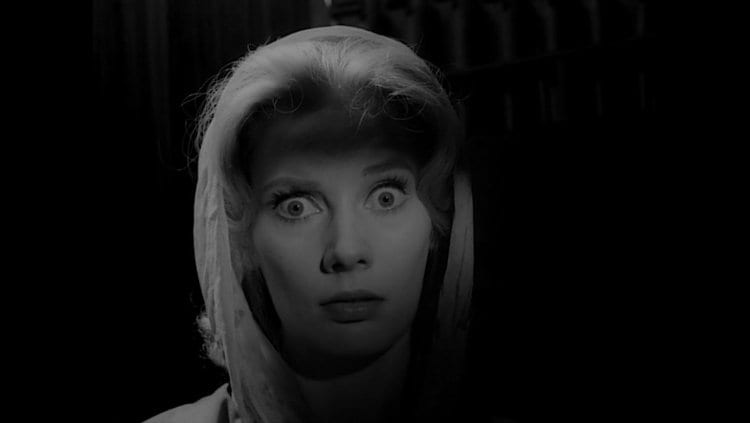 For some strange reason, I wasn’t aware of the film until recently. Or rather I hadn’t taken note of it as having potential significance to me. This despite the fact that Carnival of Souls “has often been cited as a probable influence on the work of David Lynch,” as Kier-La Janisse puts it in her liner notes to the Criterion edition. That may be so, and I’ve found plenty of references when I’ve gone looking for them online, but I can’t recall reading about the connection previously. I carried out a quick survey of the index pages of a number of my David Lynch books and no Carnival of Souls. After reading Mark Frost’s Twin Peaks: The Final Dossier, I’m starting to wonder whether history has been altered and the words have been erased from all the pages of all the books…. But for now, at least, the Criterion liner notes survive. Janisse at least calls into question whether Lynch was influenced by the film, although she does allow it some credibility. The probable influence on Lynch is “a connection made all the more plausible by the fact that Lynch’s longtime composer, Angelo Badalamenti, was once Clifford’s songwriting partner.” John Clifford wrote the screenplay of Carnival of Souls.
For some strange reason, I wasn’t aware of the film until recently. Or rather I hadn’t taken note of it as having potential significance to me. This despite the fact that Carnival of Souls “has often been cited as a probable influence on the work of David Lynch,” as Kier-La Janisse puts it in her liner notes to the Criterion edition. That may be so, and I’ve found plenty of references when I’ve gone looking for them online, but I can’t recall reading about the connection previously. I carried out a quick survey of the index pages of a number of my David Lynch books and no Carnival of Souls. After reading Mark Frost’s Twin Peaks: The Final Dossier, I’m starting to wonder whether history has been altered and the words have been erased from all the pages of all the books…. But for now, at least, the Criterion liner notes survive. Janisse at least calls into question whether Lynch was influenced by the film, although she does allow it some credibility. The probable influence on Lynch is “a connection made all the more plausible by the fact that Lynch’s longtime composer, Angelo Badalamenti, was once Clifford’s songwriting partner.” John Clifford wrote the screenplay of Carnival of Souls.
Criterion recently released the film on Blu-ray in the UK so I was able to experience the dream and make my own connections to the work of David Lynch. As I soon discovered, Eraserhead is certainly a useful point of reference when talking about Carnival of Souls. Yet there’s much to discuss beyond the strict confines of a direct comparison. Indeed, the sense of mood and the dreamlike qualities are enough to recommend the film to fans of Lynch who are open to other worlds. I think I’ve come to the right place.
Talk Gone Wrong
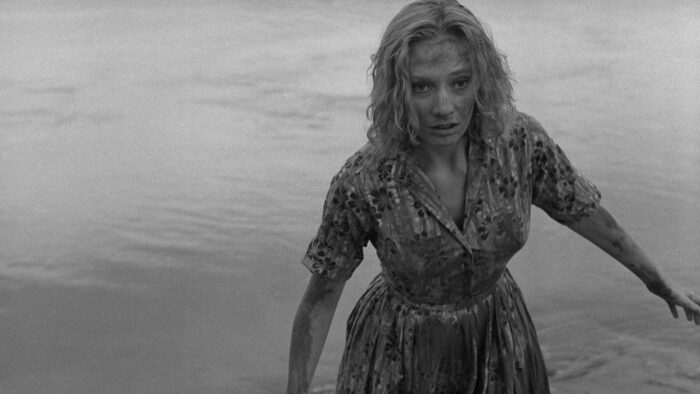
Carnival of Souls opens with a drag race, girls against boys. This may momentarily ground it in the early 1960s, but it’s quickly established that this is no fun youth picture. The girls’ car crashes through the barrier of the bridge and tumbles down into the water. It doesn’t look as if anyone is going to get out alive. The film’s titles are placed over the water, marking the absence of the car; transitory words upon a shimmering, unstable surface.
Investigators and random onlookers busy themselves (death as a spectator sport) about the shore and along the bridge. An investigator is talking to one of the guys from the other car and there is something obviously and tangibly wrong about the scene. There are no drones bubbling underneath the surface, nor is silence utilised as a means to strip proceedings of the commonplace. Instead, the words spoken don’t match the movements of the people supposed to be saying them. I initially thought there were sync issues with the disc, but I discovered this was thankfully not the case. The problem is in fact native to the film itself, with the ADR having been really badly done. They were shooting outside on a low budget with mostly non-actors (the same freedom and restrictions the early French New Wave transformed into high cinematic art), so the technical issues at least make sense. However, it is so very noticeable that ones wonders whether it was left in intentionally. Because – and this is where it gets strange – the overall effect works.
The shots have a naturalistic, documentary feel, yet the intrusion of the ADR disrupts the images and adds a layer of unreality. I’m not for a moment suggesting that it was done badly to achieve an effect. But rather when the cumulative effect was noticed – assuming that it was, which is no sure thing – Harvey decided not to correct it. Carnival of Souls isn’t all mistakes though and it does boast some technical brilliance. The black and white cinematography is beautifully evocative throughout for example. It’s not a patch on the velvet blacks of Eraserhead of course but is perfectly in tune with the likes of The Twilight Zone, a show that the film evokes more than once.
Eraserhead Conflation
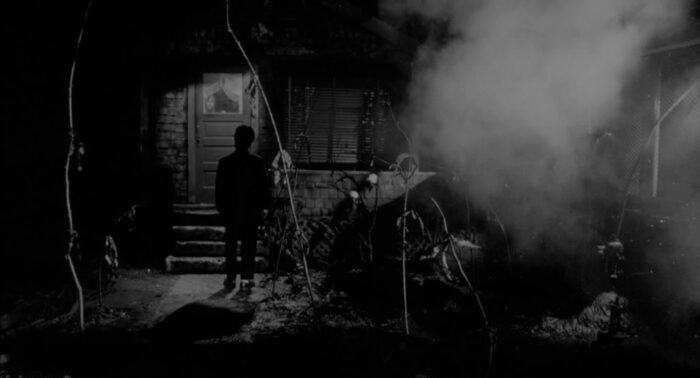
The bridge itself could almost be the one Ronette Pulaski wanders over in the Twin Peaks pilot. Like Ronette, the heroine of Carnival of Souls escapes certain death at the beginning of the story. She wanders out of the water, dazed but apparently unscathed. “What about the other girls?” she is asked. “I don’t remember,” is the almost inevitable reply, having just stepped from the waters of Lethe.
The young woman’s name will be of particular interest to Lynch aficionados: Mary Henry. If Carnival of Souls had emerged post-Eraserhead, one would be inclined to consider the name a conflation of Mary X and Henry Spencer. As it stands, did Lynch make a reference to the earlier picture through his characters’ names? I think in all likelihood he did not, at least not consciously. Another happy accident perhaps. Carnival of Souls half-remembered, names and images swimming around in Lynch’s subconscious. Gone fishing indeed.
Organ Factory

Mary Henry works in an organ factory, playing the organ. It’s a cathedral to manufacturing and is significant in that it combines the industrial and organ music, which Eraserhead would employ quite differently some years later. Mary is moving to Utah to become a church organist, although she stresses that it is only a job to her: “I’m not taking the vows, I’m only going to play the organ.”
The dialogue in this scene may be free of ADR problems, yet it is decidedly stilted. Although it seems like a precursor to the carefully enunciated Lynchian speech patterns. Lynch gets much more mileage out of his actors of course. He achieves specific, unique ways of talking. Here the actors seem uncomfortable or else unable to deliver the lines well. The banal nature of the words, coupled with the performances, creates a certain mood. Again this adds to the sense of unreality of the early scenes, which works in the film’s favour.
The following lines could even be transplanted into a Lynch production. Melodrama competes with workaday statements and achieves a strange otherness:
“Is this like the one I’ll be playing in Utah?”
“It’s quite similar. I supervised the installation myself. The accident won’t delay your going will it?”
“No, I’m leaving this morning. There’s nothing I can do here.”
The most Lynchian line delivery comes when the factory boss bids Mary farewell. It’s like something out of the superficial suburban scenes of Blue Velvet:
“Good luck Mary. Stop by and see us next time you’re in.”
That this is followed by a brief shot of wood being cut by an electric saw completes the association.
Static on the Radio
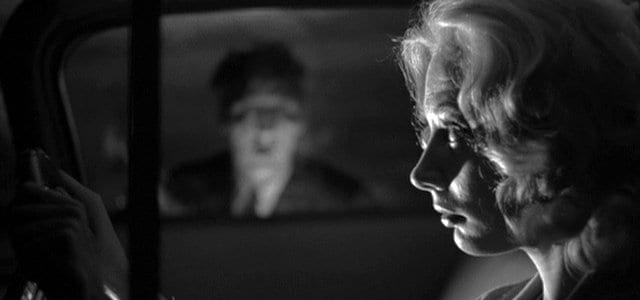
Mary drives to Utah and Harvey delineates her journey in a series of cross country shots, doubling down on the naturalism. It’s a pleasant drive by day with the radio on; lovely strings bring a lightness to the scenes. The night drive is something else entirely. Static pushes through the radio, organ music seeping through the spaces in between. Mary tries to change the station, but there is nothing else but those sounds. She looks out and sees an old building down by a lake (it used to be a carnival); her eyes are drawn inexorably to it.
Mary’s vision returns to the confines of the car and she studies her reflection in the window to her right (a rather dangerous move while driving, one would think; wasn’t one car crash enough for her?). The simple act of looking at herself is disrupted by the face of a man (the Man). He appears through her reflection as a parasitic presence, more solid than a mere reflection. His appearance is an impossible one, as he moves along with the car. It terrifies Mary, but in a moment he is gone, and only she remains, or at least that part of her that she can see. It recalls nothing less than The Twilight Zone episode “Nightmare at 20,000 Feet,” which aired a year later in 1963, although was based on an earlier Richard Matheson short story. An overactive imagination and a long drive at night may quite easily have conjured such a vision; Mary must surely have imagined it. She shakes herself out of reverie and turns back to face the road, only to find the Man right in front of the car (recalling that Woodsman/car sequence in The Return part 8). Mary swerves and goes off the road, but not off a bridge this time.

The Man, it would appear, is one of the dead. He haunts Mary Henry throughout the narrative. He’s outside her window at the rooming house she moves into (is he there or is it only her reflection?), under the stairs, and watches her when she visits the pavilion. Mary seems drawn to him and that place. “Maybe I want to satisfy myself that the place is nothing more than it appears to be,” is her explanation for going there. “Something’s wrong,” says Tammy Preston in The Final Dossier, “whether it’s with me or this place.” The answer can, of course, be that it is both.
Don’t That Give You Nightmares?

The rooming house is its own version of small-town Hell. From the landlady who tells Mary she can take all the baths that she wants (“I’m not one to fuss about things like that,” she explains, while giving off the vibe that she loathes and loves such) to the creep across the hall. Whereas Henry in Eraserhead succumbs to the allure of the woman across the hall as a means to escape his own private nightmare (albeit briefly and when he sees her with another man later on it only hastens his dive into oblivion), John Linden offers Mary nothing but a mockery of love. He simply will not leave her alone. At least the otherworldly Man offers some sort of connection, however terrifying. John gives the human realm a bad name.
Mary explains to John that she is a professional organist and only plays in a church for the pay. “Thinking like that,” he says in that slimy way of his, “don’t that give you nightmares?” As if his own behaviour wasn’t the stuff of nightmares already. “Strange you should say that,” Mary replies. She continues in proto-Lynchian fashion:
“As a matter of fact – not for that reason mind you – I had the strangest feeling last night…. It’s funny. The world is so different in the daylight.”
The language of dreams recounted in daylight. Lost Highway and Mulholland Drive spring to mind, as does William Hastings’s speech early on in The Return. Heck, it’s a Lynchian staple!
Coffee Never Keeps Me Awake

Harvey employs harsh cuts throughout Carnival of Souls, often to signify transitions in time and distance. The two are often combined to mesmerising effect. Mary may be sipping a cup of coffee when she is in bed, staring at the window. The camera follows her gaze out the window, then pushes out to the old pavilion. A cut to a POV from inside the pavilion, then back to Mary’s room and her alarm ringing. It is morning.
Mary Henry wanders through her story like Madeleine in Alfred Hitchcock’s Vertigo. Or, more specifically, like the haunted performance being put on for the benefit of Scottie. Except here it is no performance and the supernatural is entirely real.
There’s a particularly memorable sequence where Mary goes shopping for clothes in a department store. She goes into the dressing room and something comes over her reality, altering it. Waves pass over the screen (water imagery abounds in Carnival of Souls) and the spooky organ sounds bleed into the soundtrack. Rather than a supernatural event on the real world, this would seem to be a case of reality correcting itself. Mary wanders out on to the shop floor, but nobody can see or hear her. It’s very Twilight Zone indeed. As are the subsequent scenes involving the doctor who basically psychoanalyses her before admitting he isn’t a psychiatrist. “I’m a competent person,” Mary tells him. “I’m not given to imagining anything.” His explanations ring as falsely within the narrative as those offered at the end of another Hitchcock picture: Pyscho. The unexplainable need not be explained away. In fact, it cannot.
Night Falls
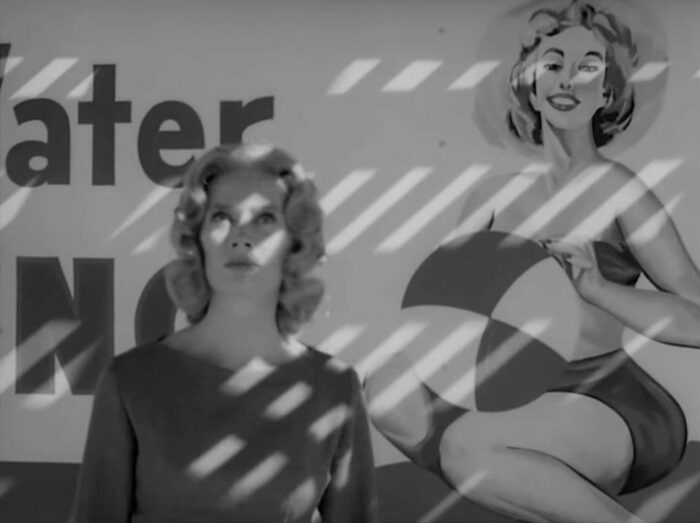
Mary Henry is being pulled back to wherever she mistakenly escaped from. If it is Hell then the real world seems far too hellish a place. Yet the Man tasked with bringing her home is no grand demon or indeed Death himself. He would rather seem to be Mary’s own ferryman, much like the Lady in the Radiator is Henry’s guide into oblivion.
Mary returns to the pavilion one last time. As night falls the dead rise out of the water. They dance and she watches. The Man dances with a dead version of Mary, although who becomes the watcher when she herself is in his arms? She runs and they chase. All of them, scrabbling after her, arms and hands and faces. They are relentless and they chase her down, their mocking laughter only slightly less terrifying than her final scream. The gathering of souls here recalls the gathering of the Woodsmen in part 8 to heal Mr. C/preserve BOB. Could they be there to save her from a world she isn’t meant to be a part of?
Carnival of Souls is one woman’s journey into the long dark night. Or perhaps the almost opposite is true: that she’s going home where she belongs, leaving the everyday horror of this world behind. Either way, her story prefigures that of Henry Spencer and others in Lynch’s work. Carnival of Souls may be clumsy and unrefined, but it has a power about it. A power that David Lynch may have admired if he ever did see the film way back when. If not, he may well have dreamed of it anyway.

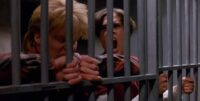

George Romero said that Night of the Living Dead was inspired by Carnival of Souls. It still ranks as one of the most haunting films ever produced. It creeped me out when I saw it on Chiller Theatre as a kid back in 1968. It still frightens me today.
There are certainly commonalities. You could get a fair amount of mileage out of drawing Lost Highway connections too.
Does anyone else think the appearance of Robert Blake’s Mystery Man in LOST HIGHWAY is reminiscent of The Man as played by Herk Harvey?
Intriguing piece about a potential influence on Lynch. Coincidentally, “Carnival of Souls” was filmed here in Lawrence, Kansas.
That’s most kind of you to say so, thanks. Fascinating – find me that organ factory! 😉